Index
The front side has two glowing lights that look cool but do nothing. It takes care of looks and we’re used to such eye catching details from Alienware designers.
One of the many great things about this notebook is its keyboard. It's very comfortable to use, and it's not too noisy, so it won't be a nuisance even in a very quiet environment, say a library.
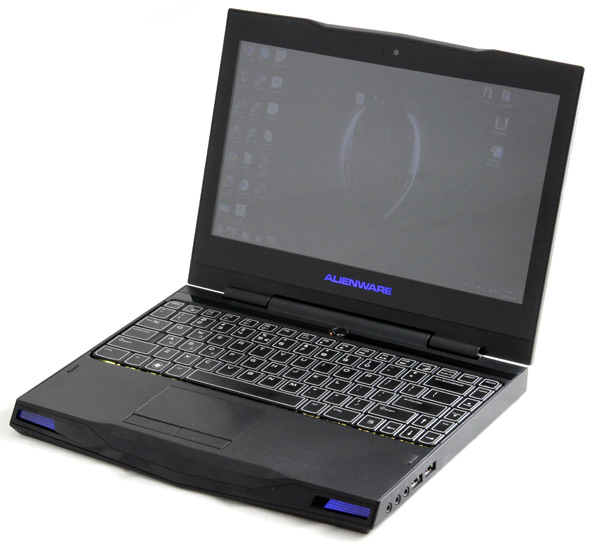
The front side has two cool glowing lights that look cool and do little. It takes care of looks.
One of the many great things about this notebook is its keyboard. It's so comfortable to use, and it's not too noisy, so it won't be a nuisance even in a very quiet environment, say a library.
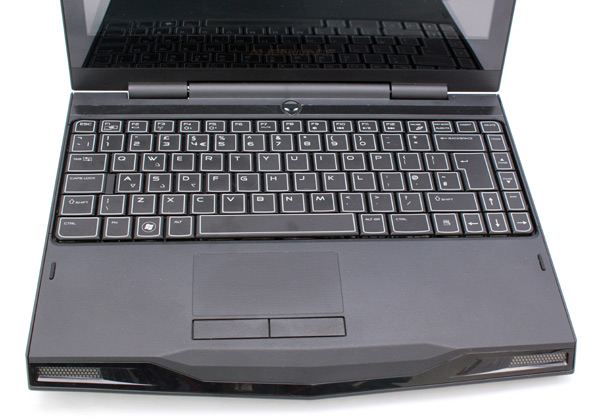
The touchpad is big and rather good, but there is still no support multitouch which is a shame in this day and age. It does what it's supposed to and you can scroll on it, which is nice, but does not make up for the lack of multitouch.
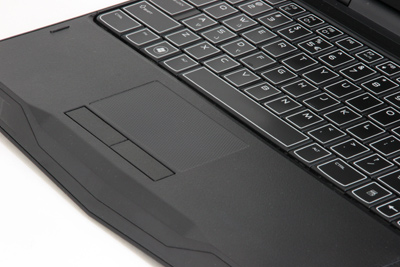
Alienware also came up with keyboard backlighting that can be changed. It is not just that, you can change the colour of the Alienware logo, front facing lights, and even the WLAN activity LED. As we said, this is something we’ve grown to expect from Alienware
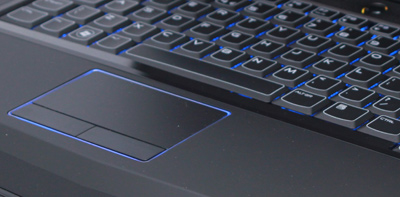
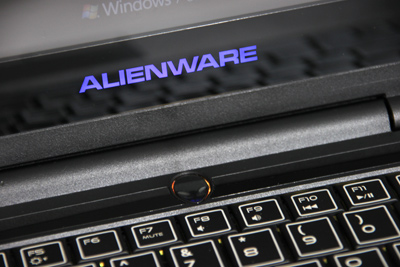
Illuminated keys are an attractive feature, especially for many young people who like to do stuff in the dark, away from prying eyes and nosy parents. You will be able to see what you type which comes handy. Once you get bored with any particular colour you can simply change it and use another. Of course, you can turn all the lights, as well as Alienware's FX software off. We love it and if you have or have seen Alienware notebook this should not be new to you. The company has been using this trick for quite some time, but it still looks cool.
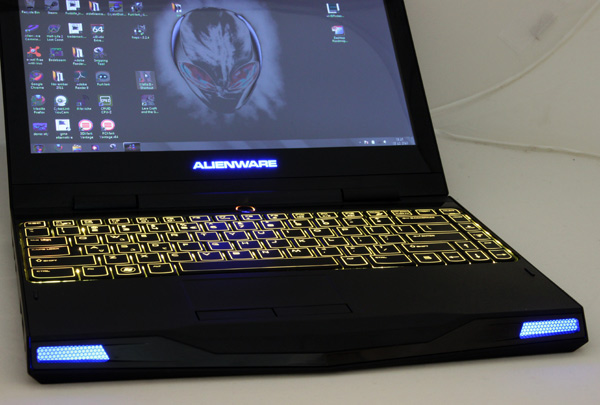
The alien head placed at the back of the lid changes the colour from blue when plugged in, to yellow when unplugged and you can of course it's totally programmable. The downside can be the slow software that might take some time to start, but LED color changes are almost instantaneous.
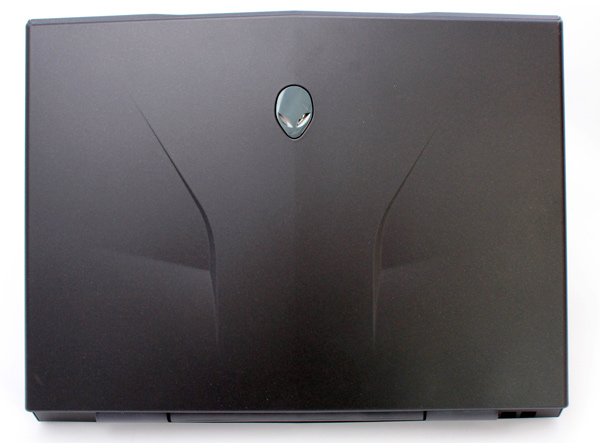
The power adapter is styled with an LED indicator ring that lets you know that the notebook is charging, all seen from R2 and earlier models.
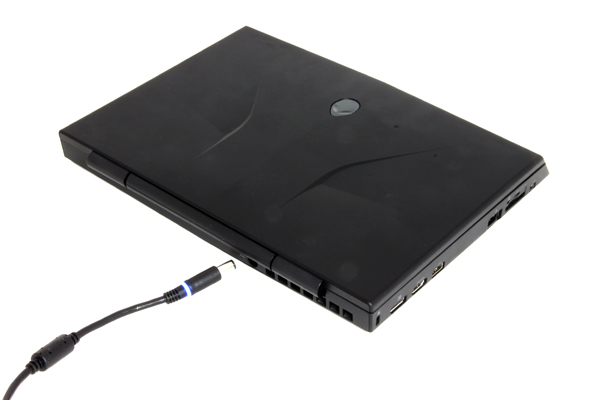
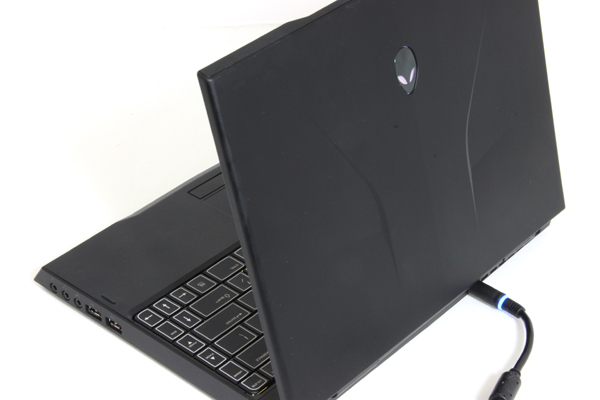
Both Displayport and HDMI outs are part of the design, but the M11x lacks a VGA out. Although people might think it's cool to have Displayport, we don't see much need for both Displayport and HDMI. HDMI is a must have nowadays. The lack of a traditional VGA connector might be an issue for some users as well, especially if there’s need to connect the R3 to a projector, but it is hardly a machine for PowerPoint presentations anyway. Next to it on the left hand side you will also find a single USB 2.0, Gigabit LAN port, dual memory card reader, all equipped for SD and even micro SD slot. Let’s not forget the Kensington lock as it is still there.
Since most phones today except the iPhone have microSDHC cards inside, you can do some quick transfer via this integrated reader. There is also a small 1394 Firewire port for cameras that many video enthusiasts can find attractive for speedy content transfer.
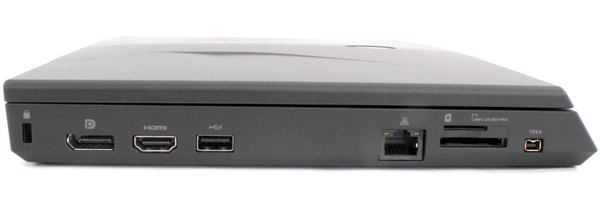
The right hand side has two USB 3.0, microphone, aux and two speaker analog ports. You can share your movie sound without a splitter, which is a great option for people who fly a lot. USB 3.0 support is a nice touch. USB 3 gets you to 60 80 MB per second when coming from a USB 3 enabled hard drive, and this marks a great improvement over USB 2.0. Naturally USB 3.0 can get even faster, but this was enough to make us happy. All in all we haven’t seen any changes to the ports since MX11 R2, all is the same.

Still there is something new to report, as Alienware has decided to use somewhat better speakers. We were already happy with the speakers from R2 but this time around Alienware has included Klipsch speakers but honestly it the R3 didn’t sound much better than R2, but then again we were quite happy with R2 sound to begin with. They just made it a bit better.
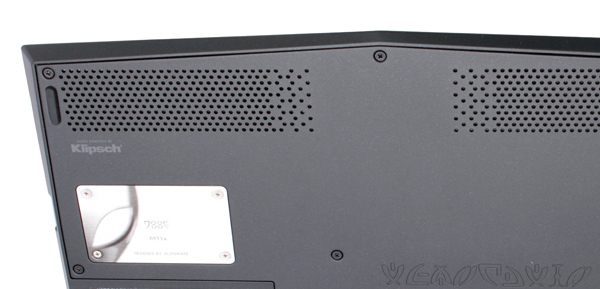
Battery life has seen some amazing improvement over the R2. In office mode, with wireless LAN off and brightness to minimum, we got almost 13 hours of plain old word and basic office productivity. This is roughly two times as much as with R2. Considering that there is a discrete GPU inside this is an exceptional achievement, but we still miss a replaceable battery. It is still not there and according to Battery Eater the MX11 has a 4545mAh battery. Once you turn on the W-Lan and browse the internet you can still get some 7 and a half hours, some mild improvement from R2. Gaming kicks the batteries butt, as with Crysis 2 and everything set to max, you have an hour to enjoy some action. Serious gaming needs a plug, period. A nice thing is a battery checker that can tell you how much battery is left even if the notebook is off.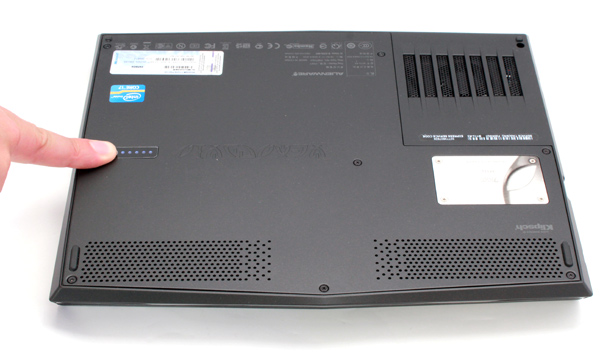
Once you start gaming the notebook will get quite loud, and definitely even louder if you are plugged in a power outlet. It also pumps a lot of hot air and the top of the keyboard becomes a bit hotter. We measured around 40 Celsius on the numeric part of the keyboard and at the exhaust fan, while normal temperate in office mode was around 27 degrees Celsius.
Since you have some great speakers, you will only notice a fan on an extremely silent scene, and if you are bothered, just use a pair of good headphones. This is the best 11.6 gaming machine in the world, so it has to come with some compromises such as integrated battery and loud fan under load. In office and power saver modes, you barely ever hear the fan, it’s almost silent.



